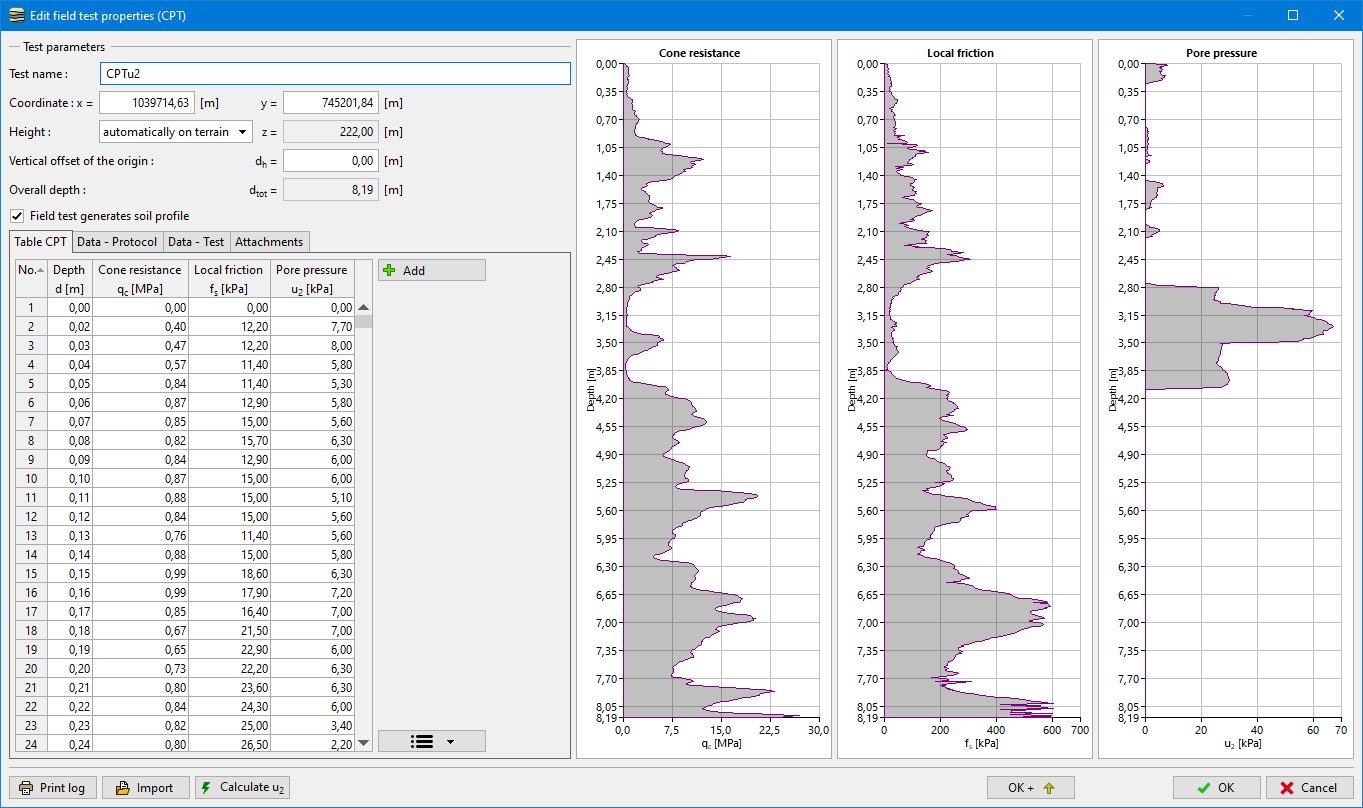The cone penetration test (CPT, CPTu) is based on pushing a penetration cone using a system of penetration rods with constant velocity (20 - 25 mm/s) into the soil. During the penetration test the values of the cone resistance qc and the local skin friction fs, respectively are recorded. The cone resistance thus represents in general the resistance against penetration of a cone spike into the soil (subsoil). The diameter of the tip of the cone spike is typically in the range of 25 - 50 mm.
The cone resistance qc represents the ratio of the measured force on the cone tip Qc and the area of the normal projection of the cone tip Ac.
The local skin friction fs represents the ratio of the measured force on the friction of sleeve Fs and the area of its skin As.
The result of the cone penetration test is its distribution plotted as a graph.
Cone penetration tests (CPT) serve as an input parameter for the analyses in the "Pile CPT" and "Spread Footing CPT" programs and for stratigraphic modeling in the "Stratigraphy" program.
The CPT can be imported into the program using the "Import" button. The procedure of an import of table data (*.txt) is more described herein.
The name of the test and the depth of the first point of the CPT is entered in the "New field test" dialog window. In the "Stratigraphy" program, the input of coordinates x, y, z is required.
The values of measured cone resistance qc are entered in the table.
When calculating the pile bearing capacity according to Schmertmann's theory, local friction fs must be entered.
When performing the classification of soils, the values of pore pressure u2 must be entered. If the pore pressure was not measured (CPTu), it can be calculated from input GWT by pressing the button "Calculate u2".
Literature:
EN ISO 22476-1: Geotechnical investigation and testing - Field testing. Part 1: Electrical cone and piezocone penetration test, 2013.
EN ISO 22476-12: Geotechnical investigation and testing - Field testing. Part 12: Mechanical cone penetration test (CPTM), 2009.
Roy E. Hunt: Geotechnical Engineering Investigation Handbook, Second Edition (CRC Press, 2005)



Charles Wells won't have had the best status however he was good at roulette. One evening in 1891, Charles went to the world-famous Monte Carlo Casino Resort 메리트카지노 and started taking part in} roulette enjoying a profitable streak of a lifetime . This guide covers a few of the the} greatest recorded wins at roulette to encourage you when you enjoy stay on line casino online action.
ReplyDelete